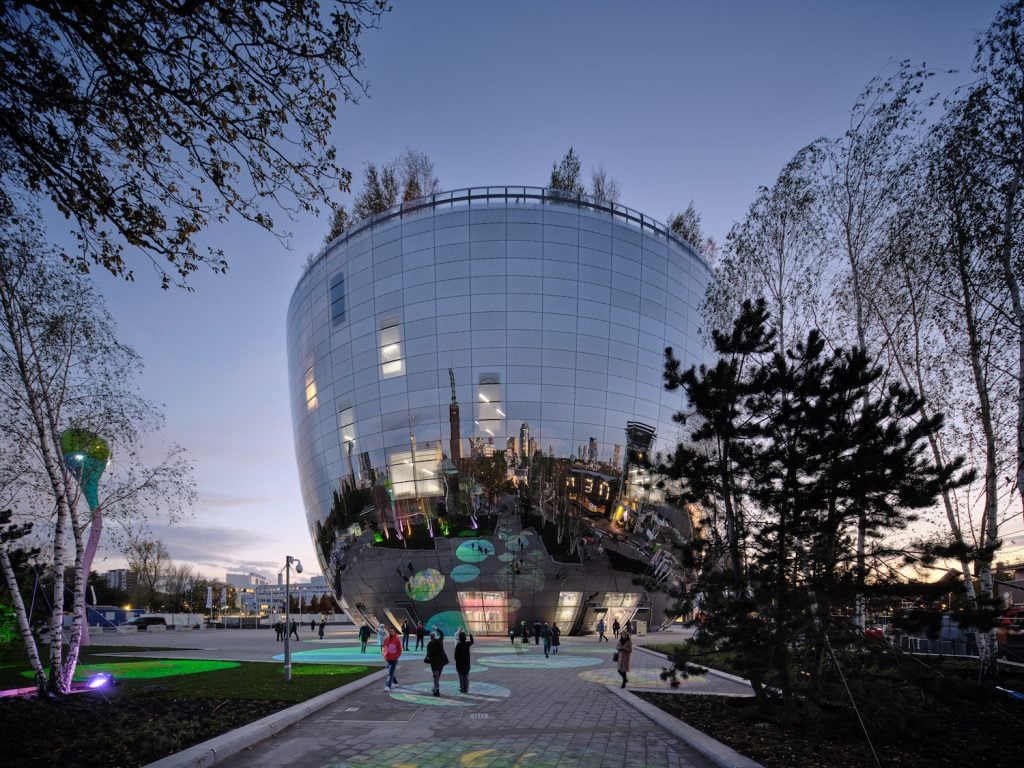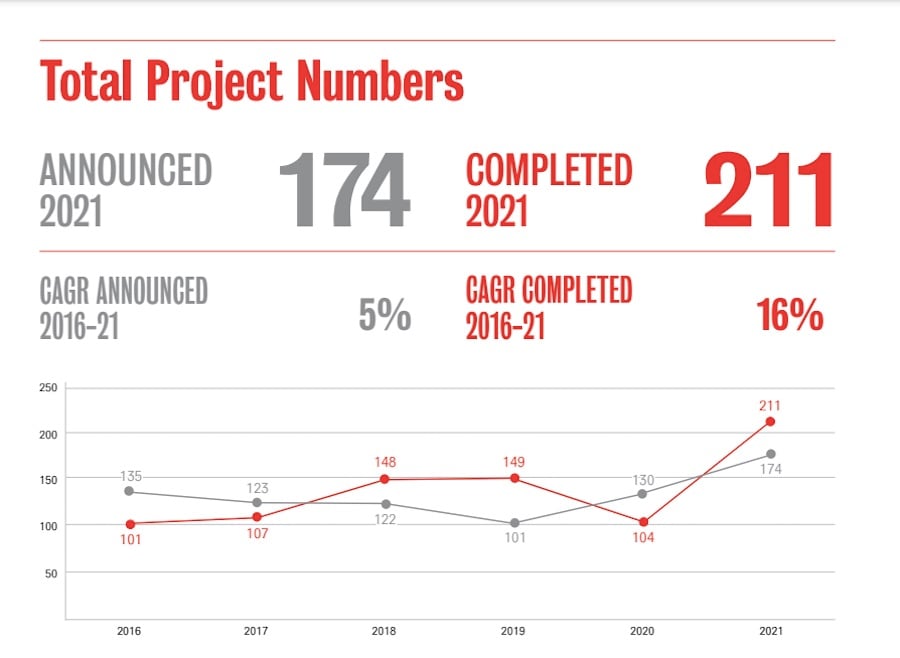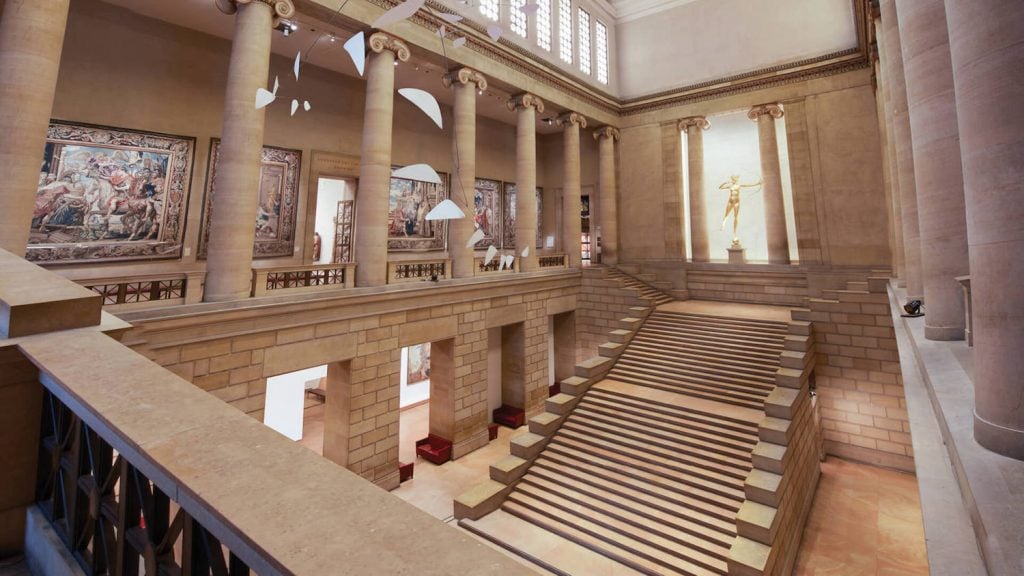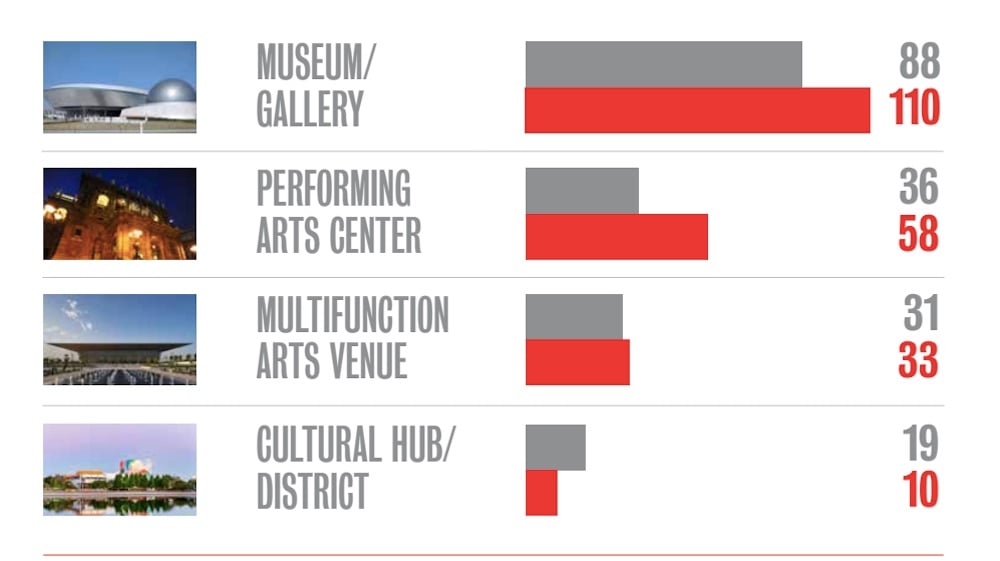Museums & Institutions
A Record Number of Museum Buildings Opened in 2021, and 6 Other Takeaways From a New Report on Global Cultural Investment
After a decline in spending due to the pandemic, cultural projects worldwide are on the rebound.

After a decline in spending due to the pandemic, cultural projects worldwide are on the rebound.

Eileen Kinsella

Given the worldwide impact of the coronavirus pandemic over the past two years, it may come as a surprise that so much money continued to flow into ambitious museum building and new cultural projects around the world. But the latest edition of Cultural Infrastructure Index, an annual report undertaken by AEA Consulting, shows just that.
The report, now in its sixth year, measures investment in capital projects in the cultural sector around the world, which must have a budget of $10 million or more to be considered. The study found that after a predictable dip in 2020, due to broader pandemic lockdowns, 2021 showed an extraordinarily robust rebound in new buildings and projects.
Not surprisingly, the coronavirus pandemic had a significant impact on the construction, completion, and opening of cultural infrastructure projects in 2020, leading to a decrease of roughly 30 percent in their volume and value, and creating uncertainty about the future pipeline of development. However in 2021, “the data paints quite a different picture as we record the highest number of completed and announced projects since we first published in 2016,” according to the report. Last year, a total of 211 projects were completed which is more than double the previous year and 174 projects were announced, up by a third.

Source: AEA Consulting
Further, while the volume of infrastructure development appears to have bounced back quicker than the authors of the report expected, more lasting change is likely to be seen in the character of the projects. This is the first year that AEA Consulting included a category for “adaptive reuse projects” in addition to new buildings, renovations, and expansions. They represent a growing segment of total investment, as project leaders seek to minimize waste while maximizing social value and relevance to local communities.
The report highlighted the Depot Boijmans van Beuningen in Rotterdam, calling it “the contender for the world’s most sophisticated publicly accessible art storage facility to date.” Opened in November 2021 and located in Museumpark in the center of Rotterdam, the $100 million structure stands next to the Museum Boijmans Van Beuningen’s main building which is closed for renovation until 2025.
It was designed by Netherlands-based firm MVRDV, and the building is clad in 1,664 mirrors and topped with 127 trees planted on its roof. Impressively, the Depot contains the museum’s entire collection of 151,000 artworks, housed in 14 storage areas with five different climates over six floors. Visitors can sign up for guided tours, in which small groups are shown around the storage facilities and given an overview of the sprawling collection and the systems in place to preserve and manage it.
Here are seven additional takeaways from the latest report.

Philadelphia Museum of Art © Elizabeth Leitzell. Courtesy of Philadelphia Museum of Art
A total of 211 large-scale cultural infrastructure projects were completed in 2021, with a total value of $11.2 billion—the highest annual volume and value of completed projects recorded since AEA Consulting began tracking the projects in 2016. “This is a significant bounce back from a dip last year when only 104 projects were completed with a value of $5.7 billion,” according to the report.
It was also a record year for announced projects, which were up 34 percent from the previous year to 174. The value of announced capital investment did not keep pace, though, dropping from $8.2 billion in 2020 to $6.5 billion, as median project values dropped 24 percent from $40 million to $30.5 million. The drop can be attributed, at least in part, to several major project announcements recorded in Shenzhen, China, in 2020, which were valued at $2.5 billion together.
The growth in 2021 was led by not-for-profit and private initiatives, the volume of which increased by 118 percent and 200 percent respectively across both finished and announced projects. In comparison, investment in public projects — while still accounting for 47 percent of total infrastructure — fell by 21 percent. The volume of public-private and commercial projects was more or less consistent with the previous year, although the value of completed commercial projects shot up following a lull in 2020, from $28 million to $26 million). This is “perhaps indicative of increased confidence as we adjust to a new, COVID-tolerant operating reality,” according to the report.

Source: AEA Consulting
On a geographic basis, the number of completed projects grew in all regions with the exception of Africa. The majority of construction took place in North America, with 92 completed projects, or 44 percent of the total. Europe accounted for 55 projects, or 26 percent of the total, while Asia had 42 projects, or 20 percent of the total and Australia/New Zealand, the Middle East, Latin America, and Africa together accounted for 22 completed projects or just 10 percent of the total. Announced projects show a similar regional distribution, with a notable decrease in investment in Asia compared with a record year last year. They were down 71 percent from $3.6 billion to $1.1 billion.

Luma Arles © Sérgio Nogueira : Alamy Stock Photo
Museums remained the dominant building type, accounting for 51 percent of announced and completed projects and accounting for $8.9 billion of total investment, up 29 percent from the previous year. Performing arts centers were the next most popular form, accounting for 24 percent of of projects, and also saw increased investment amounting to $4.8 billion, up 72 percent from the previous year. Multifunction arts venues accounted for 17 percent of projects, and “cultural hubs/districts” accounted for eight percent of projects.
The number of new-build project announcements fell this year down to 91 from 102, as expansion and renovation projects both increased, accounting for $972 million and $1.2 billion of investment, respectively. The new category of adaptive reuse projects will now be tracked annually. This year, 22 adaptive reuse projects were completed and 18 were announced with a combined value of $1.6 billion.
The report found that the most frequently engaged architectural practice was Gehry Partners with four projects this year. David Chipperfield, Foster + Partners, Herzog & de Meuron, Olson Kundig, Tod Williams Billie Tsien Architects, and Renzo Piano had three projects each.
Since 2016, the most often engaged practices have been David Chipperfield Architects (11 projects), Herzog & de Meuron (10 projects), Gehry Partners (8 projects), and Olson Kundig (8 projects).
The three highest value projects completed in 2021 were: M+ Museum at the West Kowloon Cultural District in Hong Kong with a reported budget of $760.0 million; MUNCH, Oslo, Norway at $632 million; and the Academy Museum of Motion Pictures, in Los Angeles, California, at $482 million.
Meanwhile, the top three announced projects were: First Nations Cultural Precinct, Melbourne, Australia ($286.0 million); Natural History Museum, Baoding, China ($254.0 million); and Ngurra Cultural Precinct, in Canberra, Australia ($227.0 million).